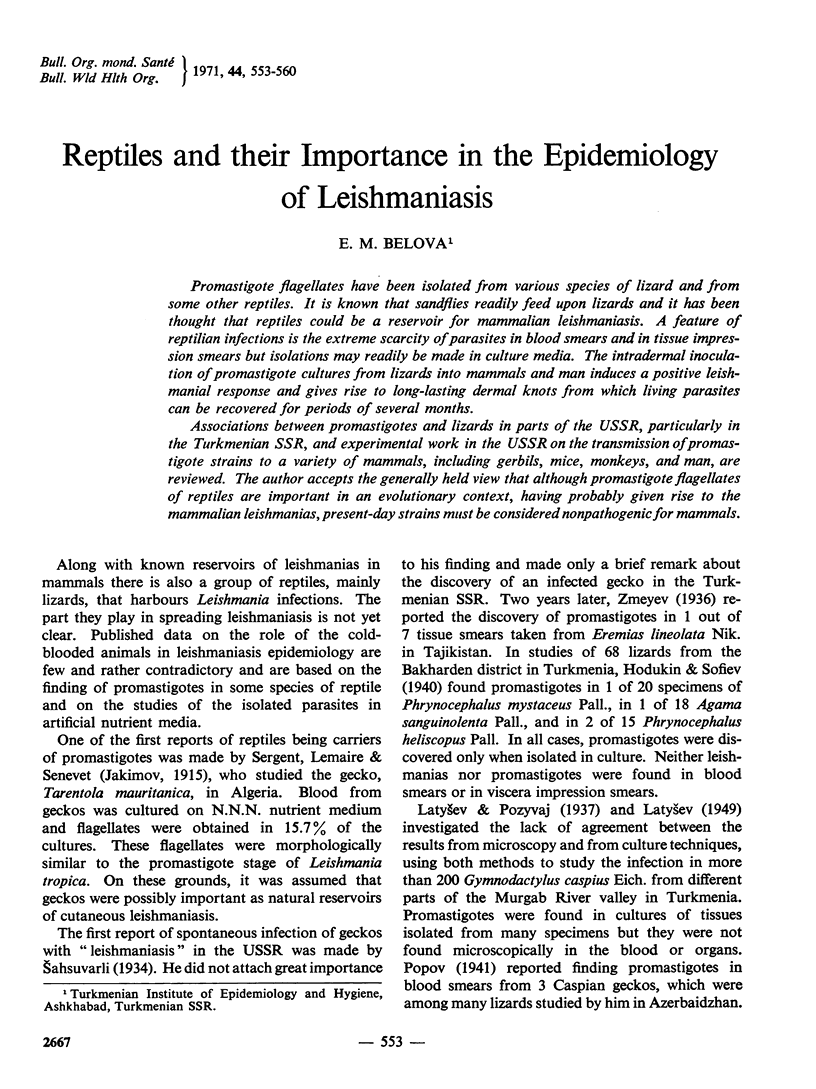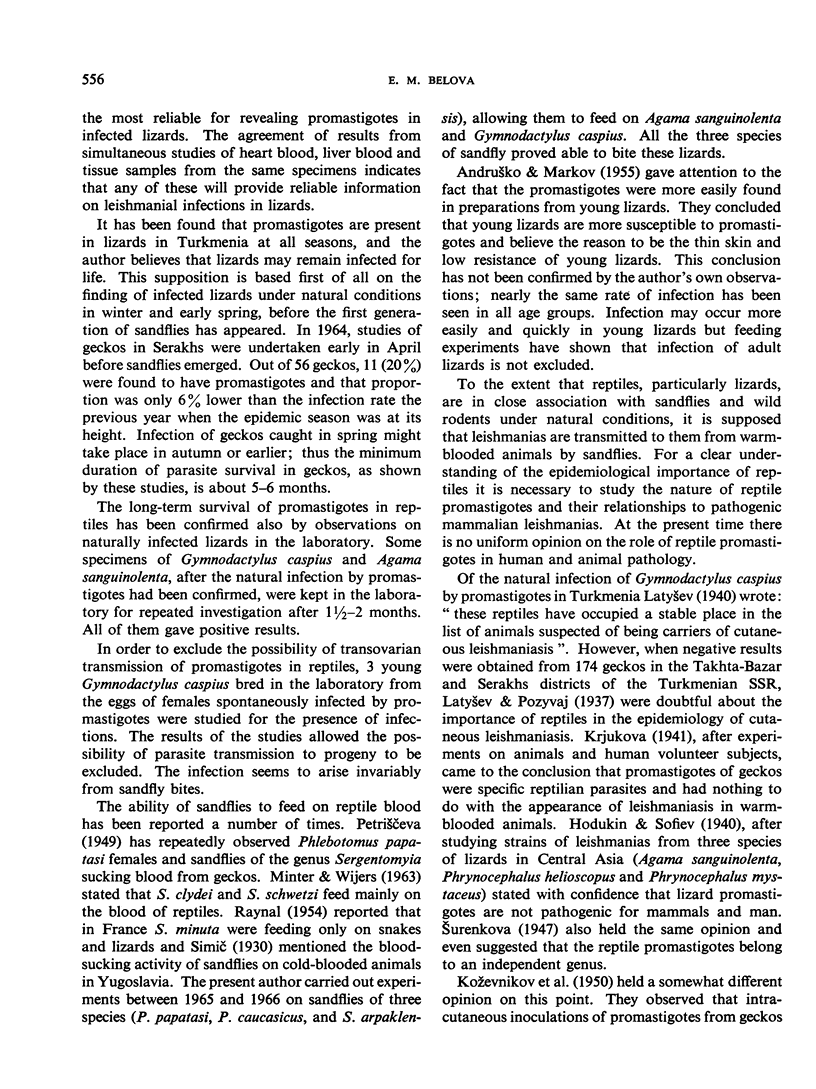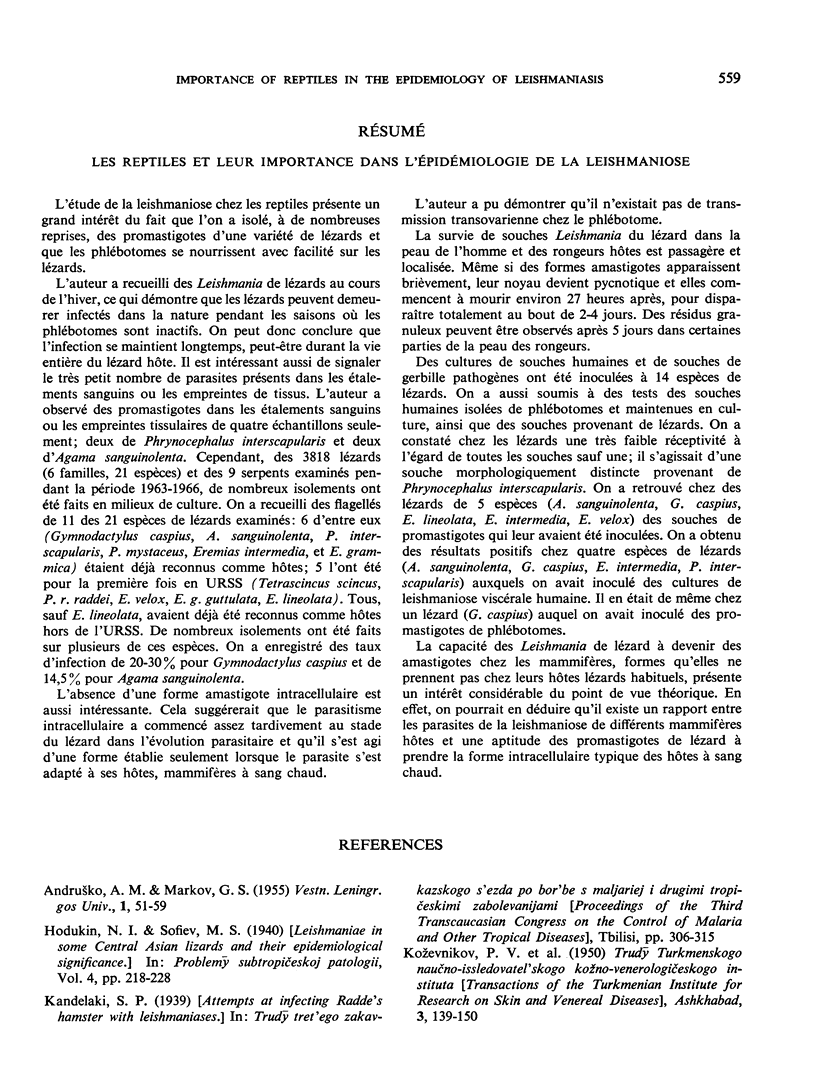Abstract
Promastigote flagellates have been isolated from various species of lizard and from some other reptiles. It is known that sandflies readily feed upon lizards and it has been thought that reptiles could be a reservoir for mammalian leishmaniasis. A feature of reptilian infections is the extreme scarcity of parasites in blood smears and in tissue impression smears but isolations may readily be made in culture media. The intradermal inoculation of promastigote cultures from lizards into mammals and man induces a positive leishmanial response and gives rise to long-lasting dermal knots from which living parasites can be recovered for periods of several months.
Associations between promastigotes and lizards in parts of the USSR, particularly in the Turkmenian SSR, and experimental work in the USSR on the transmission of promastigote strains to a variety of mammals, including gerbils, mice, monkeys, and man, are reviewed. The author accepts the generally held view that although promastigote flagellates of reptiles are important in an evolutionary context, having probably given rise to the mammalian leishmanias, present-day strains must be considered nonpathogenic for mammals.
Full text
PDF







Selected References
These references are in PubMed. This may not be the complete list of references from this article.
- MANSON-BAHR P. E., HEISCH R. B. Transient infection of man with a Leishmania (L. adleri) of lizards. Ann Trop Med Parasitol. 1961 Oct;55:381–382. doi: 10.1080/00034983.1961.11686061. [DOI] [PubMed] [Google Scholar]
- RAYNAL J. H. Les phlébotomes de France et leur distribution régionale. Ann Parasitol Hum Comp. 1954;29(3):297–323. [PubMed] [Google Scholar]


